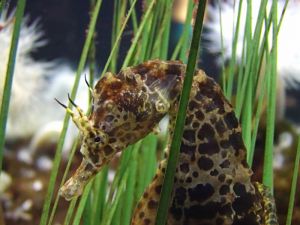Tag Archives: reed
New Sea Creatures Discovered off the Coast of Newfoundland
A conglomerate of Canadian and Spanish researchers have discovered new marine life, which have been previously unknown to the scientific community, and some are even over a 1,000 years old. They are hoping that these creatures will shed some light into the secrets of the ancient underwater ecosystems.
Scientists from the Spanish Institute of Oceanography in conjunction with three Canadian universities and the Fisheries Department are going on a 20 day expedition to take some photos and pick up samples of coral and sponges up to 3 kilometers deep in the cold waters off the Newfoundland coast.
The team will be studying 11 different areas which are under the protection of the North Atlantic Fisheries Organization.
These are important areas of study as they are the home to the “trees of the ocean” explains a research scientist with the Fisheries Department, Ellen Kenchington. Ellen is also leading the expedition.
The coral which can be found in these areas can be several meters tall and is sufficient enough in size to change the flow of currents. It is also the home to many other fish and other aquatic life.
The aim of the study is to see whether or not these areas need further protection from fishing to help keep the species abundant.
Ellen went on to explain that scientists can actually take a look at the chemical makeup of the coral and figure out the temperature of the water and other information dating back as far as 1,000 years!
For pictures see
http://www.montrealgazette.com
Seahorse started swimming upright 25 million years ago
An expansion of vertical seagrass occurring some 25 million years ago was probably what prompted seahorses to evolve from horizontal swimmers to upright creatures. If you live in vertical seagrass, an upright position is ideal since it allows you to stay hidden among the vertical blades.
This new idea is put forward in a report by Professor Beheregaray* and Dr Teske** published in the journal Biology Letters on May 6.
Sea horse picture from our Seahorse section.
Only two known fossils of seahorse have been found and this scarcity of fossil records has made it difficult for scientists to determine when seahorses evolved to swim upright. The older of the two fossils is “just” 13 million years old and no links between the two fossils and horizontally-swimming fish has been found.
“When you look back in time, you don’t see intermediate seahorse-like fish,” Beheregaray explains. There are however fish alive today that look like horizontally-swimming seahorses and Beheregaray and Teske have therefore studied them in hope of finding clues as to when seahorses made the transition from horizontal to vertical swimming.
By comparing DNA from seahorses with DNA from other species of the same family, Beheregaray and Teske were able to determine who the closest living relative to seahorses was.
“The pygmy pipehorses are by far the most seahorse-like fish on earth, says Beheregaray. “They do look like the seahorses, but they swim horizontally“.
When you have two closely related species, you can use molecular dating techniques to calculate when the two species diverged from each other. Beheregaray and Teske used a molecular dating technique that relies on the accumulation of differences in the DNA between the two species, and then used the two existing fossils to calibrate the rate of evolution of DNA in their molecular clock. By doing so, the two researchers could conclude that the last common ancestor of seahorses and pygmy pipehorses lived around 25 to 28 million years ago. At this point, something must have happened that led to the formation of two distinct species, and Beheregaray and Teske believe that this “thing” was the expansion of seagrass in the habitat where seahorses first evolved.
The time in history when seahorses arose, the Oligocene epoch, coincided with the formation of vast areas of shallow water in Austalasia. These shallow waters became overgrown with seagrass and turned into the perfect habitat for upright swimming seahorses that could remain hidden from predators among the vertical blades. The pygmy pipehorse on the other hand lived in large algae on reefs and had no use for an upright position, hence it continued to swim horizontally just like their common ancestor.
“The two groups split in a period when there were conditions favouring that split,” says Beheregaray. “It’s like us. We started walking upright when we moved to the savannahs. On the other hand, the seahorses invaded the new vast areas of seagrass.”
* Associate Professor Luciano Beheregaray of Flinders University
http://www.flinders.edu.au
** Dr Peter Teske of Macquarie University
http://www.macquarie.edu.au
